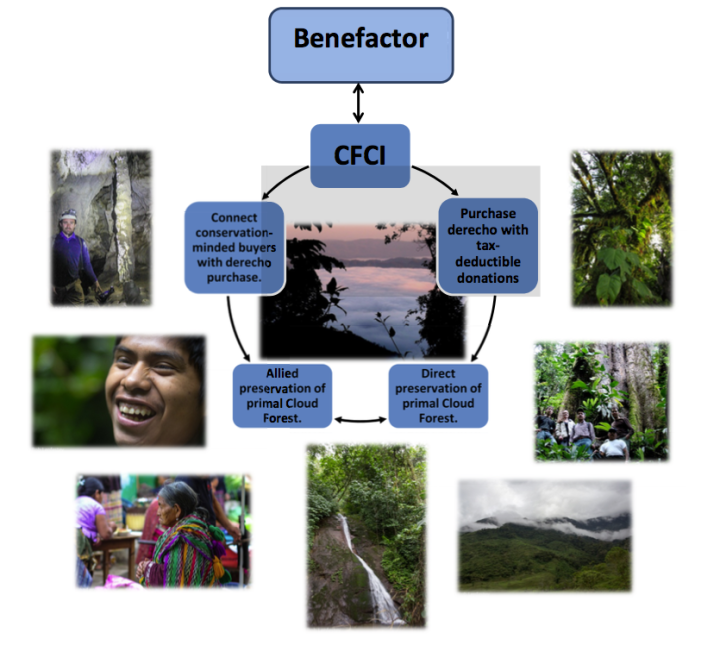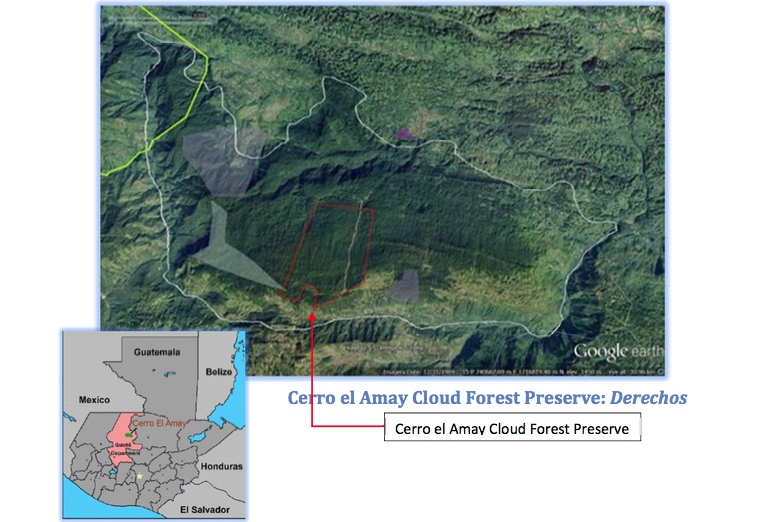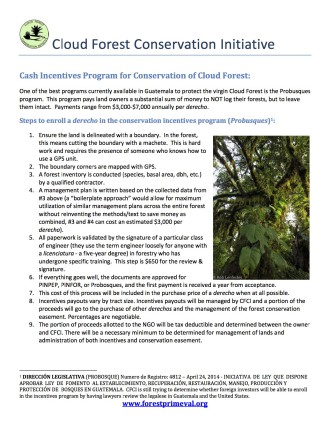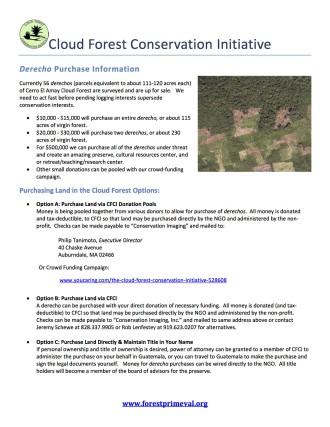Until a few years ago, the largest unprotected cloud forest in Central America was unknown to the world, outside of a few natives living in its vicinity. That changed in 2014, when Asheville residents Jeremy Schewe and Rob Lenfestey became the first exploratory team to visit the primeval wilderness of Cerro el Amay.
Now, Schewe and Lenfestey are attempting to rally environmental enthusiasts to save this pristine forest from encroaching development. Through their nonprofit organization the Cloud Forest Conservation Initiative and a Youcaring campaign, the two WNC locals are hoping to raise awareness of the impending destruction of this unique environment and raise funds to purchase and protect 111 acres of the forest in Northern Guatemala.
What is a cloud forest, exactly? According to Wikipedia, cloud forests are defined as “generally tropical or subtropical, evergreen, montane, moist forest[s] characterized by a persistent, frequent or seasonal low-level cloud cover, usually at the canopy level,” which led to the name “cloud forest.” According to Lenfestey, however, such a description barely scratches the surface of the beauty contained within these dense, humid environs.

“Imagine giant buttressed trees with entire worlds, entire forests contained within their branches and spiraling down their trucks,” he describes. “Sink holes leading to endless miles of cathedral-like caves with running underground streams, rivers and waterfalls; New species at every turn, including a crab, further from the ocean and higher in elevation then any crab has ever been seen. It contains a primal essence that is hard to describe — It has long ago been wiped from our forests.”
Lenfestey and Schewe were first introduced to the Cerro el Amay by a colleague, Dr. Phil Tanimoto, who had stumbled upon it while researching the endangered horned guan, an animal subsequently found living within the forest. “He invited Jeremy and I to come in 2014 and spend a few weeks,” says Lenfestey. “We fell in love immediately.”
After returning to Asheville, the two established the Cloud Forest Conservation Initiative, with the mission of preserving this pristine environment. They began hosting fundraisers and events aimed at raising awareness about Cerro el Amay, as well as organizing eco-tourism retreats to bring visitors to the region and raise money to plant macadamia and cacao trees to bolster the local economy.
All proceeds from the trips go to local residents of the forest, as an attempt to show how eco-tourism can yield greater financial returns than agriculture and lumber clear cutting. To date, the nonprofit has also purchased and preserved almost 1,000 acres of the forest.
“We brought a crew of almost entirely local Asheville people down in 2015,” Lenfestey reports. The group created two bio-engineered grey water systems for the local community, in addition to their forest exploration activities. “This group has now become a major part of the team helping spread the word and save this forest,” he says.
Lenfestey and Schewe plan to lead another retreat on Tuesday, March 8, in which half of the group will consist of WNC residents. They will continue to use GIS to map the forest, as well as leading an expedition to a never-before seen river deep within the Cerro el Amay.
But recent developments in Guatemala threaten to derail their dreams of preserving the forest for perpetuity. In February, The local Mayan residents of the area voted to sell all of the 111 acre parcels of the forest that they are individually allotted, says Lenfestey. “These sell for about $135 an acre ($15,000 a parcel). One greedy man has already bought one and clear cut five acres from the inside of the forest.”
In response, Lenfestey and Schewe are calling on the Asheville community to raise its voice against this ecological destruction. “Because of the immediacy of the straits that this forest is in, I am doing everything I can to mobilize our community to step up and save this cloud forest,” Lenfestey says. “If we save it we will be able to bring people here on adventure, to create a thriving economy where a desert would otherwise form and save one of the most beautiful places I have ever known.”

The group heading to Guatemala on March 8th, which includes 10 yogis and ecologists, will attempt to connect with the people living there and assist them with conservation efforts and land acquisition. But they are in need of financial help to expand their efforts.
To that end, they are working towards raising funds to acquire the acreage through the Probusques program, which pays land owners to defer from logging their forests. Land owners are paid between 3,000 and 7,000 dollars annually per derecho, which is approximately 115 acres of virgin forests. The CFCI has estimated that about 500,000 dollars would be needed to protect all derechos currently under threat from development.
Lenfestey encourages those interested in supporting CFCI’s mission to contribute to its crowfunding campaign at youcaring.com/the-cloud-forest-conservation-initiative or visit CFCI’s website at forestprimeval.org. Donors can also contribute directly to CFCI with tax-deductible contributions, which the nonprofit will use to purchase and administer cloud forest lands, or can work with CFCI representatives to directly purchase lands themselves. “All title holders will become a member of the board of advisors for the preserve,” says Lenfestey.
Time is of the essence,” he warns. “We need to make some pretty big waves to prevent this from happening and ensure that this sacred and ancient place will be here for generations to come.”
For more information on the Guatemalan cloud forest Cerro el Amay, the Cloud Forest Conservation Initiative, or how you can assist in efforts to preserve the forest, visit forestprimeval.org or check out its Facebook page.






Thank you for your hard work on this article!!!
You’re very welcome Rob! Thanks for reading and for all of your organization’s hard work to save this unique ecosystem.